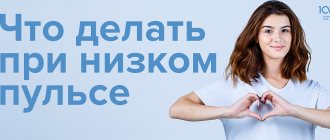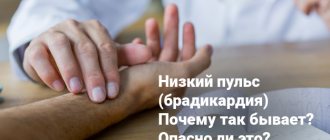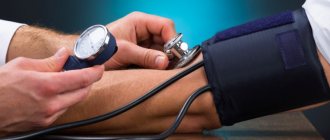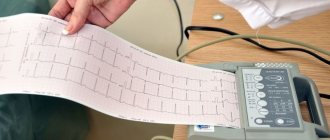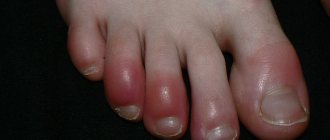Arrhythmia is observed in many people suffering from vegetative-vascular dystonia. Heart rhythm disturbances may manifest differently in everyone. There is a classification of pathologies that defines different types of cardiac dysfunction.
If you have arrhythmia due to VSD, on this page you will find out what is happening to the body, the causes of the pathology, get acquainted with the symptoms, and receive recommendations for treatment. Do not forget that only a doctor can make an accurate diagnosis and prescribe treatment. The information is presented for informational purposes and not for self-medication.
Why does arrhythmia appear in vegetative-vascular dystonia and neurosis?
Arrhythmia, which manifests itself against the background of VSD and neurosis, like the vegetative and neurotic disorder itself, is of a purely functional nature. At first, a person may not notice interruptions in the functioning of his heart. In the absence of timely and correct treatment, it becomes habitual, and the patient does not pay attention to it.
Normally, the sinus node (SU) is responsible for generating electrical signals that regulate the rhythmic mechanical contraction of the heart. But against the background of the development of VSD and disturbances in the processes of the autonomic nervous system, the intensity and order of “supervising” the work of the sinus node of the vagus nerve and sympathetic influences changes, which leads to various forms of arrhythmia.
To put it simply, the regulation of the heart is ensured by impulse flows coming from the central nervous system (CNS) along the parasympathetic and sympathetic nerves of the ANS.
The vagus nerve, which belongs to the parasympathetic division, slows down its rhythm. Sympathetic nerves, on the contrary, accelerate the impulse responsible for myocardial contractions.
When such a failure occurs in a well-coordinated mechanism, disturbances in heart beats (arrhythmias) appear. An imbalance in the parts of the nervous system, which is functional in nature, becomes the cause of arrhythmic syndrome in VSD.
Other causes of arrhythmia
There are other factors that cause abnormal heart rate (HR)
These include:
- Congenital and acquired cardiac heart defects.
- Diseases of the cardiovascular system.
- Some diseases of the central nervous system.
- Diseases of the endocrine system.
- Infectious diseases.
- Diabetes.
- Excessive consumption of coffee, strong tea.
- Alcohol abuse.
- Physical and mental overload.
- Binge eating.
- Dehydration.
- Hypothermia or overheating of the body.
- Stress, psychological shocks.
On a note!
Normally, the heart of an adult makes 60-80 beats per minute, in a calm position. For some people the norm is up to 90 beats/min. When walking, the beat frequency ranges from 90-120 per minute. In women, in 1 minute the heart beats 10-12 beats more than in men.
Arrhythmia can occur at any age (including children) and for various reasons. Any pathology in the electrical conduction system causes the development of a failure of heart contractions.
To establish the exact cause, a detailed medical examination is necessary.
Causes of increased heart rate with VSD
Patients with vegetative-vascular dystonia periodically suffer from pulse and blood pressure disturbances. These attacks can be spontaneous, but in most cases they can be predicted in advance. So, tachycardia can be provoked by the following changes:
- sudden changes in weather conditions, including in the off-season;
- eating large amounts of food;
- intense physical activity, as well as sudden movements and changes in body position;
- violation of the diet (instant coffee, alcoholic and carbonated drinks are especially dangerous);
- any stressful situations.
A healthy lifestyle and a stable psychological state are the main conditions for preventing another attack. However, increased concern for one’s own health can cause the development of cardioneurosis. In this condition, the patient constantly listens to the rhythm of the heart, counts the pulse and measures the pressure, which can activate the next exacerbation.
General symptoms of arrhythmia
Symptoms vary depending on what type of arrhythmia the patient has. But there are common signs for all types of heart rhythm disturbances.
Since arrhythmia in VSD and neuroses is psychogenic in nature, it is most often accompanied by the following symptoms:
- Lack of air.
- Shortness of breath.
- Trouble breathing.
- Feeling of heaviness in the chest.
- Fluttering in the chest.
- Dizziness.
- Increased heart rate.
- Increased sweating.
- Heat in the body or, conversely, chills.
- Weakness, increased fatigue.
- Feelings of anxiety, panic attacks.
Types of arrhythmia in neurosis and VSD
Cardiac arrhythmia during VSD is divided into several types. They are also divided into functional and organic. In the first case, the pathology develops with a completely healthy heart and is not a complication of the disease. This type of pathology most often occurs with vegetative-vascular dystonia. In the second case, arrhythmia is caused by physiological diseases.
Tachycardia specifically with VSD is divided into two types:
- Intracardial . The etiology is associated with the cardiovascular system. Failure of heart rate indicates impaired functioning of the ventricles, poor blood flow, and heart failure.
- Extracardiac . The non-organic nature of the disease, which is determined by a neurological, psychological factor. Sometimes it may indicate diseases of the kidneys and adrenal glands.
Diagnostics
Any disturbances in the functioning of the heart require immediate examination. Specialized doctor – cardiologist.
To make a diagnosis, the patient is prescribed the following types of diagnostics;
- Measurement of heart rate and blood pressure.
- Electrocardiogram (ECG).
- Echocardiography (ultrasound of the heart).
If these studies do not provide a complete picture, then Holter monitoring is used to more accurately identify the causes of arrhythmia. The method is based on round-the-clock analysis of the electrophysiological function of the heart muscle. The patient puts on a special sensor and spends a day or two with it.
Choletron monitoring of the heart allows you to identify many disorders in the functioning of the organ, and not only functional, but organic, for example, spontaneous variants of angina that occur at night, or painless equivalents of myocardial ischemia.
This study is the most accurate, extensive and very useful in preventing serious pathologies.
ONLINE APPOINTMENT WITH A DOCTOR IN ANY CITY IN RUSSIA
Diagnostic methods
To determine atrial fibrillation, a comprehensive examination of the heart and related organs is performed, and the patient’s physical condition is also analyzed.
The examination includes:
- electro- and echocardiography,
- daily or multi-day ECG monitoring,
- Ultrasound of the thyroid gland and hormone analysis,
- clinical and biochemical blood test,
- determination of potassium and magnesium levels,
- lipid profile,
- physical stress testing.
It is convenient to undergo complex diagnostics in a specialized cardiac center: you don’t have to waste energy, time and additional money on visiting doctors in different clinics in your city. The result of the diagnosis should be a detailed plan for further treatment.
Is cardiac arrhythmia dangerous during VSD?
Various types of arrhythmia caused by psychogenic factors are not life-threatening. But only if a person promptly seeks help and accepts treatment.
It is worth understanding that any disturbances in the functioning of the heart that remain unattended can become chronic. Over time, the nervous form of arrhythmia will turn into a physiological one. Irreversible changes may begin in the most important organ, threatening serious diseases, early heart attack, and constant pain.
Of course, it will take a long time for this disorder to develop from a psychogenic to an organic form. Therefore, do not be alarmed if you have recently experienced arrhythmia - just visit a doctor and have your heart checked.
What is atrial fibrillation
Atrial fibrillation is a heart disorder in which the electrical impulse is distributed unevenly throughout the heart. Because of this, the heart chambers work uncoordinatedly: instead of contractions, twitching or “flickering” occurs in the atrium, and the ventricles also contract in the wrong rhythm.
The picture on the left shows a normal heart rhythm, sinus. The electrical signal is generated in the sinus node and spreads evenly through the conduction system of the heart. The right shows how electrical impulses are generated randomly in different places and cause atrial fibrillation.
There are 3 forms of atrial fibrillation:
Paroxysmal or paroxysmal - manifests itself in short attacks that go away on their own within a few minutes or hours. Some people may have only one attack in their entire life, while others may have them several times a day. In this case, you need to consult a doctor to rule out pathology and other forms of the disease.
Persistent or temporarily stable - attacks can last several days, weeks or months. Characterized by the inability to restore heart rhythm without drug treatment and therapy.
Chronic or permanent - occurs, as a rule, with prolonged atrial fibrillation. In this case, the heart rhythm is not restored with the help of treatment, but learning to maintain normal well-being of the body is a feasible and important task.
If an attack lasts longer than 48 hours, blood begins to stagnate in the upper parts of the heart: clots form and the risk of complications increases - blood clots and, subsequently, stroke. Therefore, seeking cardiac care for any manifestation of arrhythmia is a vital necessity.
Treatment
If during the examination any physiological diseases of the cardiovascular system were identified, then treatment appropriate to the diagnosis is prescribed. As the pathology is eliminated, the heart rate disturbance itself goes away.
Important!
Other serious diseases may be hidden under the mask of VSD. Only a doctor can make an accurate diagnosis and prescribe the correct treatment! All information on the site is for informational purposes only and is not a reason for self-diagnosis or self-medication.
But the ways to deal with arrhythmia during VSD have their own characteristics. Since the main provoking factor for disturbances in the functioning of the heart are neuropsychological problems, complex therapy is prescribed.
This is interesting :
How life-threatening is VSD?
Drug treatment
Drug therapy includes medications that relieve arrhythmia symptoms:
- Beta blockers - reduce the sensitivity of adrenaline receptors, usually prescribed for tachycardia and extrasystole.
- Calcium channel blockers - used to eliminate atrial fibrillation.
- Sodium channel blockers are effective antiarrhythmic agents.
- Potassium channel blockers - used for angina pectoris, supraventricular arrhythmia.
- Tranquilizers – reduce anxiety, nervous excitability, and help improve sleep.
- Sedatives – have a calming effect, have a positive effect on sleep, and increase stress resistance.
- Antidepersants - reduce anxiety, stimulate neurotransmitters, improving mood and general psycho-emotional state.
- Nootropics - improve cerebral circulation, improve memory, concentration, and have a positive effect on the general condition.
Any medications are prescribed strictly by a doctor. Self-medication of vegetative-vascular dystonia is dangerous because its symptoms can mask organic diseases.
Physiotherapy
Physiotherapy is very useful in the fight against functional cardiac arrhythmia. It acts comprehensively on the entire body, improving metabolic processes, increasing immunity, and also relaxing spasmodic muscles and blood vessels.
Recommended procedures:
- Massage.
- Acupuncture.
- Sharko's shower.
- Magnetotherapy.
- Balneotherapy.
Psychotherapy
In the treatment of vegetative-vascular dystonia, neurosis and their consequences - arrhythmia, asthenia, panic attacks, psychotherapy can play a key role.
The specialist helps the patient discover the true causes of the functional disorder. Often these are unconscious and suppressed stress, internal conflicts, hidden depression, and psychological trauma. These factors are quite capable of causing VSD and arrhythmia.
The psychotherapist also teaches the sufferer to react differently to external factors in order to reduce the impact of stress.
Psychotherapy helps a person overcome internal problems, form new views, forms of behavior, thinking and perception.
Today the most effective methods are:
- cognitive behavioral psychotherapy;
- Gestalt therapy;
- hypnotherapy;
- psychoanalysis.
Interesting facts about psychotherapy
- Fact 1
- Fact 2
- Fact 3
Mere presence of the client is not enough. Sometimes, when clients go to a psychotherapist, they think that all that is required of them is to attend sessions. In much the same way, they come to the doctor complaining of a bad runny nose and leave with a prescription for an antibiotic. If a person comes to a psychotherapist with the attitude of “solve my problems,” he will be very disappointed. Psychotherapy is impossible without the cooperation of the client and the therapist; passively waiting for the result will not yield anything.
The psychotherapist is not a psychic. He does not know how to read thoughts and look into a person’s soul. Thanks to special education and knowledge, the therapist can analyze the situation in which the client finds himself. But without information from the patient himself, the specialist will not be able to find out anything and help.
Psychotherapists work not only with mental disorders. Like psychologists, they can help the patient solve various psychological difficulties and problems that many people face in everyday life.
As problems that lie deep in the subconscious are resolved, a person’s inner world changes for the better. The nervous system gradually returns to normal, all symptoms of vegetative-vascular dystonia weaken and disappear.
